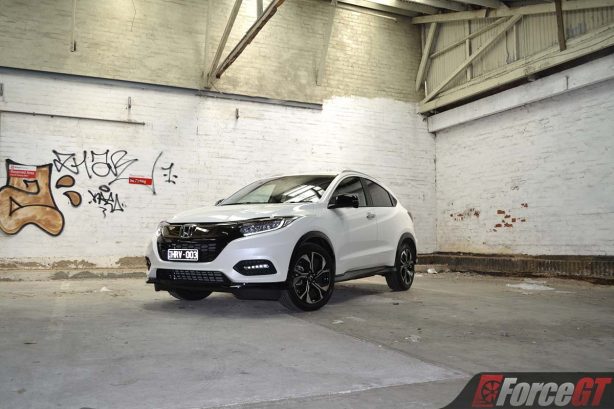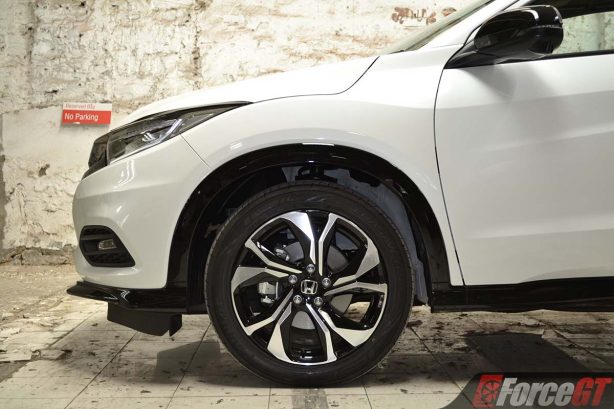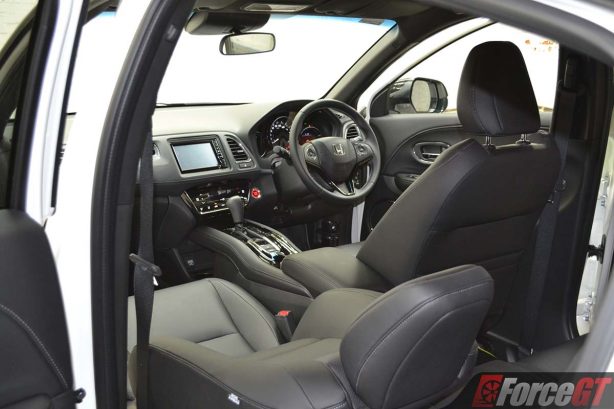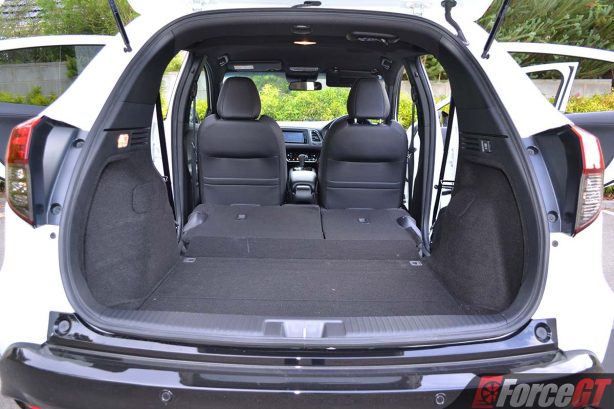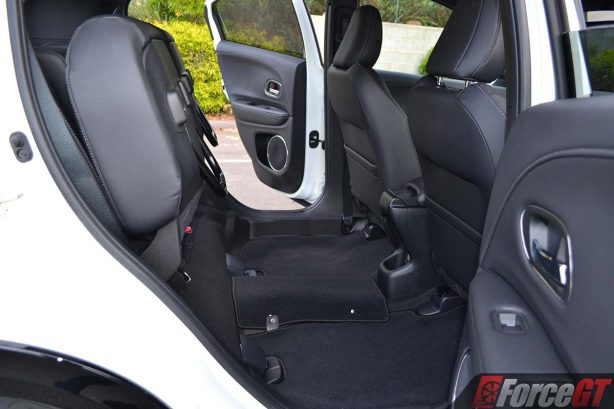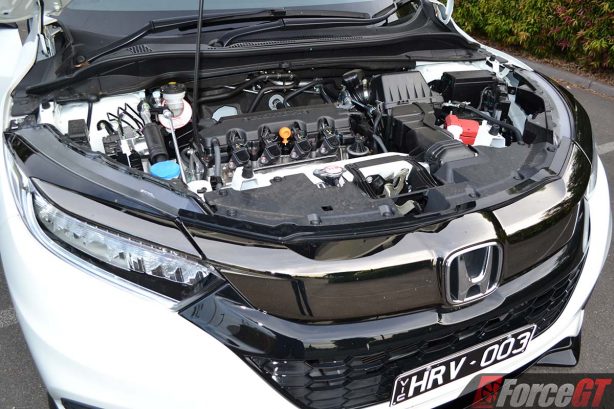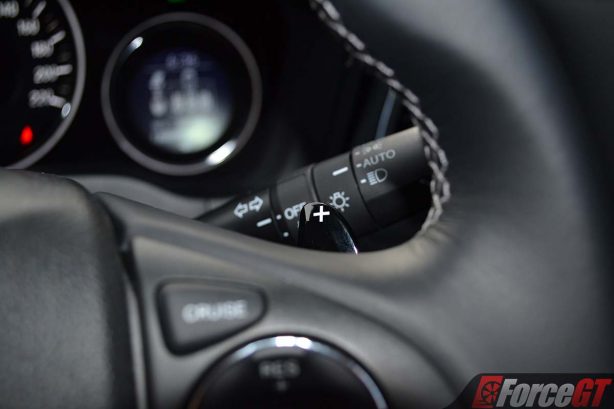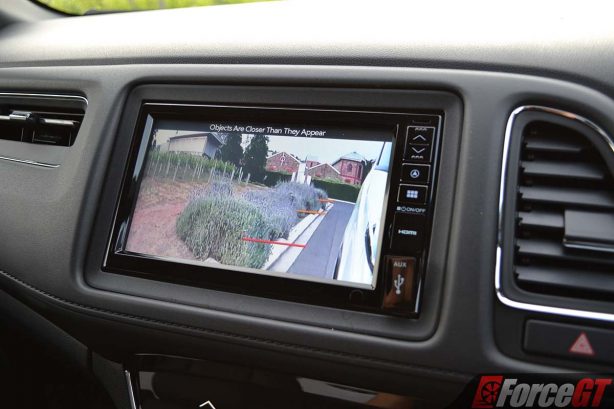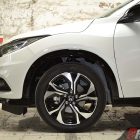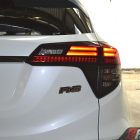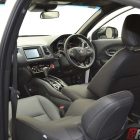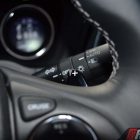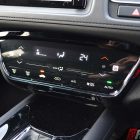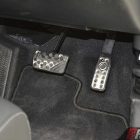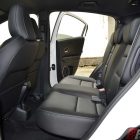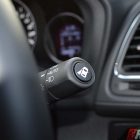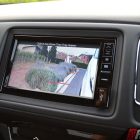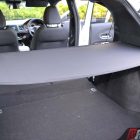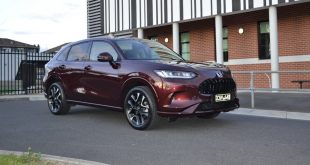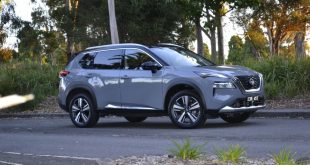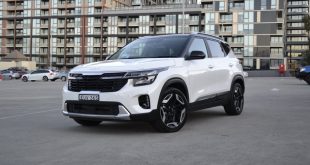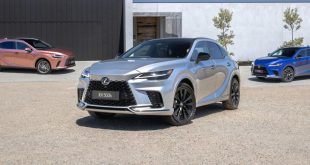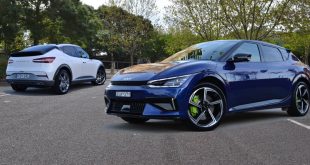We first got acquainted with the 2nd-generation Honda HR-V three years ago and as is customary at this stage of its life, the popular small SUV has been refreshed for 2019.
Though as far as a facelift goes, the changes aren’t dramatic. However, look closely and you’ll notice a few strategically applied nips and tucks to bring the HR-V into the fore with the rest of the Honda range, as well as with its contemporaries.
Honda has also broadened the HR-V’s appeal with the welcome addition of range-wide safety technologies and a new athletic looking RS variant, which we are driving here.
What new about its design?
If the styling tweaks are a little hard to spot on the rest of the range, there’s no such issue with the HR-V RS.
The model features handsome, fender filling 18-inch two-tone alloy wheels, black chrome appointed grille with honeycomb lower grille and fog light garnish, black mirror caps, dark chrome door handles and a gloss black (Honda calls it Piano Black) body kit.
The new headlights (including indicators) are now fully LED to lend a more premium look, and together with the ground-effect body kit, the little SUV certainly cuts a sporty figure and is undoubtedly the most stylish of the range.
That doesn’t mean the rest of the line-up is lacking in the styling department though. The HR-V’s overall design is still one of the best in its class, but with smaller, less appealing 16-inch wheels and old-school halogen headlights with their yellow beams, the entry-level VTi isn’t what you would describe as upmarket.
Not much has changed in its interior compared to the outgoing model although the RS does sport some unique touches, including black headlining, leather-appointed heated seats, leather-wrapped sports steering wheel and gear knob, along with alloy sports pedals.
Build quality is good and most touch points like the armrests, door cards (even the rear door cards) and front facing dashboard are all nicely padded. While the top of the dash is made of hard plastics, it doesn’t feel cheap or scratchy.
How practical is it inside?
As before, the HR-V’s trump card is its large and versatile interior.
There are plenty of hidey-holes in the car, including a variable height cup holder that could take a mobile phone when you’re not sipping lattes, and when you are, there’s a pocket on either side of the front centre console next to the gear lever for the driver and front passenger’s phones. Valuable can also be stored out of sight in the hidden compartment behind the centre console, too.
The HR-V tardis-like interior means space is surprisingly abundant despite its size. Legroom is good both front and rear although the large panoramic sunroof does rob some headroom.
It’s easy to get comfortable, too, with nicely supportive seats and a rake and reach steering wheel. Rear seat passengers can also adjust the angle of the backrest for added comfort.
What makes the HR-V stands out is its unrivalled versatility courtesy of the trick ‘Magic Seats’ with 18 different possible configurations to maximise cargo-carrying options.
As you can see from the photos, not only can the rear seat backs be folded down to give a cavernous 1,462 litre of flat cargo capacity, the base of the back seats can also be flipped up to carry tall items.
Got a stepladder or surfboards? No worries. Just recline the front passenger seat backrest and fold the passenger’s side rear seat down and, voila!
With all seats in place, the HR-V still yields an impressive 437 litre of luggage carrying capacity.
The flexible cargo blind can also double as a windscreen sunshade when required. Genius!
What’s under the bonnet?
The RS retains the 1.8-litre four-cylinder petrol engine shared with the rest of the HR-V range. With no turbo in sight, it comes with an identical output of 105kW at 6,500rpm and 172Nm at 4,300rpm. And while not underpowered, it isn’t what you would describe as punchy, either.
It’s backed up by a continuously variable transmission (CVT) that has been updated with a pseudo seven-speed mode that kicks in at full throttle. It works well on take off but isn’t as responsive once under way. The RS also comes with a set of steering wheel paddles for slightly more control.
The engine is smooth although tends to get quite vocal as the revs climb. With no engine stop/start and under hard belting for the test, the RS returned 7.8L/100km on test against Honda’s claim of 6.7L/100km. On the freeway however and that drops to the low 5.0’s.
How does it drive?
While the suspension setup remains MacPherson struts up front and torsion beams at the rear, with its own unique dampers and spring rates, the HR-V RS is a tidy handler and makes a good impression of being sporty.
You could throw it around corners and it would hold itself up well. We drove it harder than most buyers ever would and it is a surprisingly fun car to punt around the bends, with an agile feel and engaging dynamics.
In the city, the ride is slightly firmer but the suspension does a good job in smoothing out all but the deepest potholes. There is also additional sound deadening in the RS to reduce road noise.
The RS’ new variable ratio steering is responsive, communicative and well weighted for everyday use. It also feels more natural and progressive than most rivals’ electric system. There’s no superfluous ‘Sports’ mode here to add artificial weight either, just a simple, well-calibrated setup straight out-of-the-box.
The downside however is a slightly larger turning circle compared to the rest of the HR-V range – 11.0m versus 10.6m.
The brake pedals have a good consistent feel to them that adds to the RS’ confidence inspiring handling.
What features do I get?
All HR-V variants feature LED daytime running lights, Magic Seats, multi-angle reverse camera, City Brake Active System (AEB), 7.0-inch touchscreen with built-in Satellite Navigation, Bluetooth with audio streaming, USB connectivity, automatic single zone climate control, brake hold and cruise control.
RS also gains keyless entry and push-button start, automatic LED headlights, 18-inch alloy wheels, Honda ‘LaneWatch’ side camera, heated leather seats which have been redesigned, auto wipers and alloy pedals.
One of our biggest gripes against the HR-V though, is its sat-nav. It is slow to calculate and instructions aren’t clearly displayed on screen, and because Apple CarPlay and Android Auto is conspicuously missing on all variants, you are essentially stuck with it.
The RS also misses out on Honda’s Advanced Driver Assist System (ADAS) which brings Forward Collision Warning, Lane Departure Warning and Auto High Beam.
What is the running cost?
Honda now offers a competitive five-year warranty with no cap in mileage. Although unlike some rivals, there is no complimentary roadside assistance during the warranty period.
The entire HR-V range also qualifies for capped price servicing for up to 10 years or 100,000km at an average price of $296 per service plus any consumables.
Verdict
Design & Comfort
Performance & Handling
Quality
Economy
Equipment & Features
OUR SCORE
4.2/5
+ Plus
- Best looking of the range
- Engaging dynamics
- Impressive versatility and practicality
- Improved refinement
– Minus
- Capable chassis could handle more power
- Clunky sat-nav and dated interface
Overall
The HR-V RS is a welcome addition to the range and should be the go to model for those who are after a practical yet fun to drive small SUV.
It is comfortable, impressively versatile and with 5-years warranty and low running costs, makes it a compelling proposition.
2019 Honda HR-V RS pricing and specification
| Price (Excl. on-road costs): | From: $31,990 As tested: $31,990 |
| Warranty: | 5 years/unlimited kilometers |
| Warranty Customer Service: | N/A |
| Country of Origin: | Japan. Built in Thailand |
| Service Intervals: | 12 months/10,000km |
| Engine: | 1.8-litre aspirated in-line 4-cylinder petrol: 105kW@6,500rpm, 172Nm@4,300rpm |
| Transmission: | Constantly variable transmission (CVT) |
| Drivetrain: | Front-wheel drive |
| Power to Weight Ratio (W/kg): | 80.5 |
| 0-100km/h (seconds): | N/A |
| Combined Fuel Consumption (L/100km): | Claimed: 6.7 / Tested: 7.8 |
| RON Rating: | 91 |
| Fuel Capacity (L): | 50 |
| Body: | 5-door SUV, 5 seats |
| Safety: |
|
| Dimensions (L/W/H/W-B) mm: | 4,360/1,790/1,605/2,610 |
| Turning Circle Between Kerbs: | 5.3 |
| Ground Clearance: | 170 |
| Kerb Weight (kg): | 1,294 |
| Boot Space (min/max)(L): | 437/1,462 |
| Towing Capacity (kg): | Braked: 800/Unbraked: 500 |
| Entertainment: |
|
Competitors: Fiat 500X, Hyundai Kona, Holden Trax, Mazda CX-3, Nissan Qashqai, Mitsubishi Eclipse Cross, Renault Captur
 ForceGT.com Car News, Car Reviews, Video Reviews, Tuning and much more.
ForceGT.com Car News, Car Reviews, Video Reviews, Tuning and much more. 